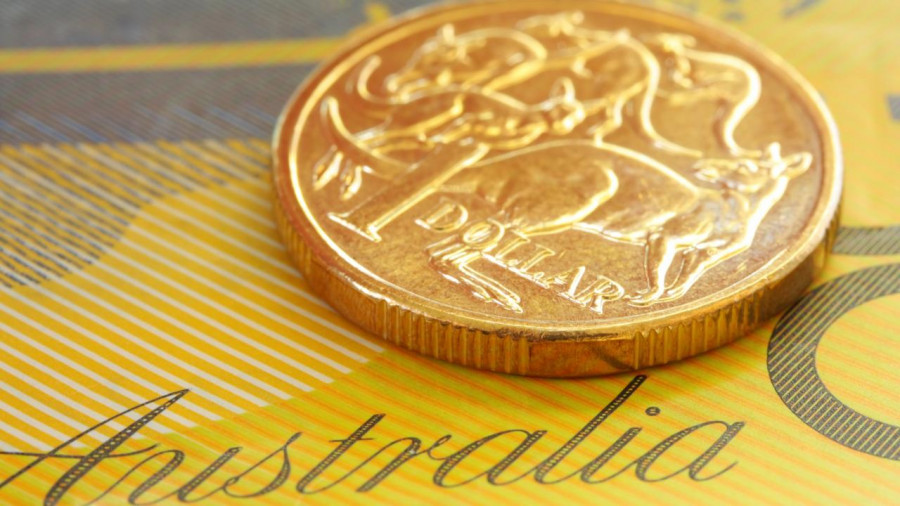
The Australian dollar continues to be under strong selling pressure against the US currency, although the AUD/USD bears have loosened their grip. Since mid-August, sellers have been regularly trying to gain a foothold at about 1.63, but all their efforts have been in vain. As a result, AUD/USD has been stuck in the range of 0.6380-0.6450, reflecting the indecision of both bulls and bears. Jerome Powell's speech on Friday at the Jackson Hole economic symposium sparked a dollar's rally. So, the US currency strengthened across the board, allowing AUD/USD sellers to retest the 63 level. But not more. Obviously, in order to resume the downtrend, market participants need a more powerful informational occasion. Likewise, buyers need a powerful trump card of a fundamental nature in to arrange a large-scale upward correction. Both bulls and bears de facto froze in anticipation with the instrument trading within the above sideways channel.
They don't have to wait for too long. The economic calendar is full of important events for dollar pairs this week, including for AUD/USD. First of all, we are talking about inflation reports which will be published in Australia and the US. This data can push the instrument out of the corridor, especially if they "resonate" in favor of the bearish or bullish scenario.

Let's start with the Australian report. We can say that it will be the last straw for the aussie. If the consumer price index turns out to be in the red zone or even comes out at the predicted level, then the growth of AUD/USD in the foreseeable future will be possible only due to the weakening of the greenback.
Let me remind you that the recently published minutes of the RBA meeting in August had significant pressure on the aussie as it revealed the dovish sentiment among the central bank's policymakers. The main message of the document is that the current interest rates "provide a reliable path to return to the inflation target." This suggests that the Reserve Bank is ready to maintain a wait-and-see approach if inflation metrics do not start to gain momentum again.
Recent inflation data has shown otherwise. For example, the June CPI came out at 5.4% (a one-year low), while the CPI for the second quarter eased to 0.8% whereas economists had predicted a decline to 1.0% after a rise of 1.4 % in the first quarter. This is the weakest growth rate since 2021. The wage index also showed a downtrend. It unexpectedly dropped to 3.6% in the second quarter of this year. Despite a minor decline, the very fact of the decrease matters a lot after many months of consistent growth.
On Wednesday, August 30, traders will get to know the Australian consumer price index for July. According to flash estimates, the CPI could have dropped to 5.2%, thus updating the one-year low. The index will confirm the downward dynamics of headline inflation. For comparison, this figure was at around 8.4% in December last year.
As you know, the Reserve Bank of Australia put the cash rate on hold at the last two meetings, citing downward inflationary trends. According to many experts (in particular, UOB Group), the central bank is likely to maintain the status quo at the next meetings on September 5 and October 3. The release of the inflation data for July may cement such assumptions, putting additional pressure on the aussie. If the CPI comes out at least at the predicted level, the AUD/USD bears are likely to try to break the lower limit of the above 0.6380-0.6450 range in order to test the next support level at 0.6350, plotted by the lower line of the Bollinger Bands indicator on the daily chart. The US dollar, in turn, may receive support from the core PCE index for July which will be available on Thursday, August 31. In May and June, the core index of personal consumption expenditures gradually decreased, ending up at 4.1% y/y, the lowest value since October 2021. According to most analysts, the PCE will turn up again in July with, inching up to 4.2%. At the same time, Fed Chairman Jerome Powell, speaking at an economic symposium in Jackson Hole, predicted a more significant increase in the core PCE - up to 4.3%. If, with such forecasts, the indicator goes into the green zone, the greenback will receive significant support.
Thus, AUD/USD traders have several important exams ahead of them, as a result of which the pair will either resume its downward movement or go for an upward correction. Judging by forecasts, the first scenario looks more realistic.
Technical analysis signals the same. On all larger timeframes (from H4 and above), AUD/USD has settled either on the lower line or between the middle and lower lines of the Bollinger Bands indicator. Besides, on the daily and weekly charts, the Ichimoku indicator has formed one of its strongest bearish signals "Parade of Lines". Therefore, it is advisable to use any corrective retracements to open short positions with the main target at 0.6350.